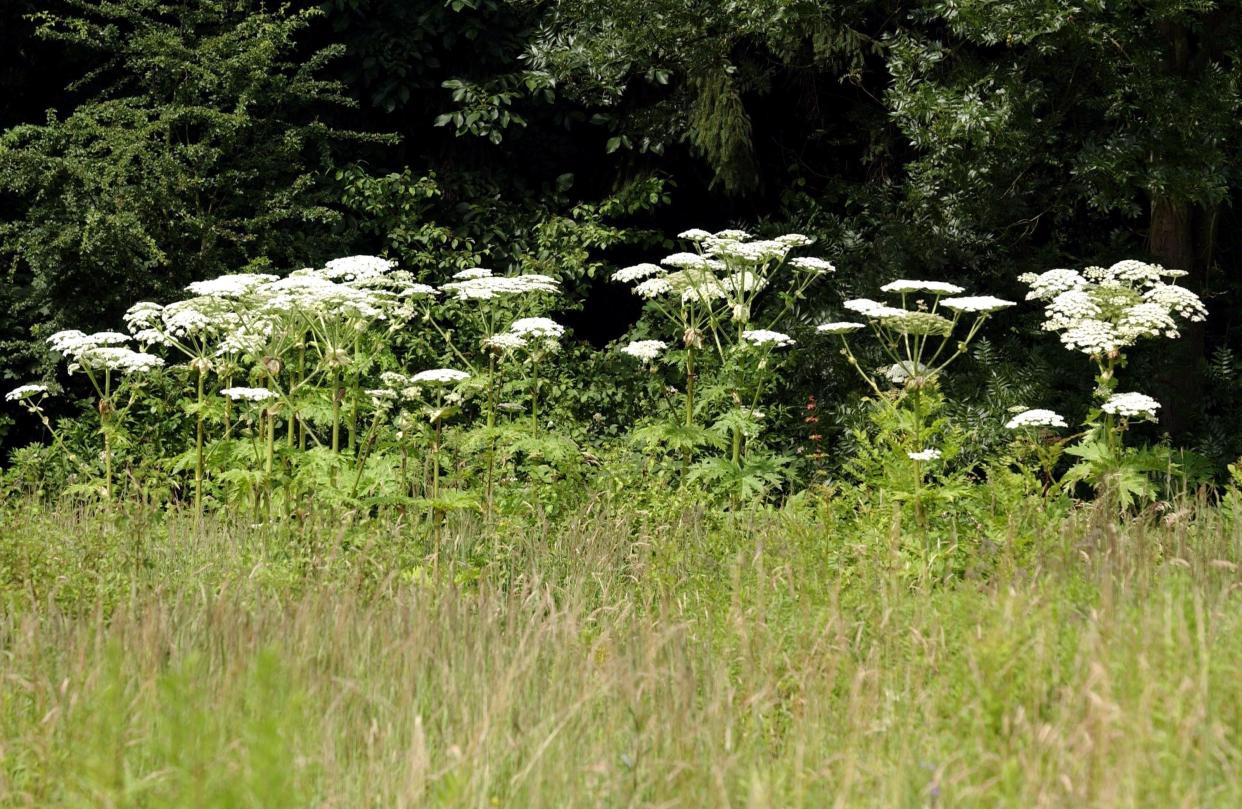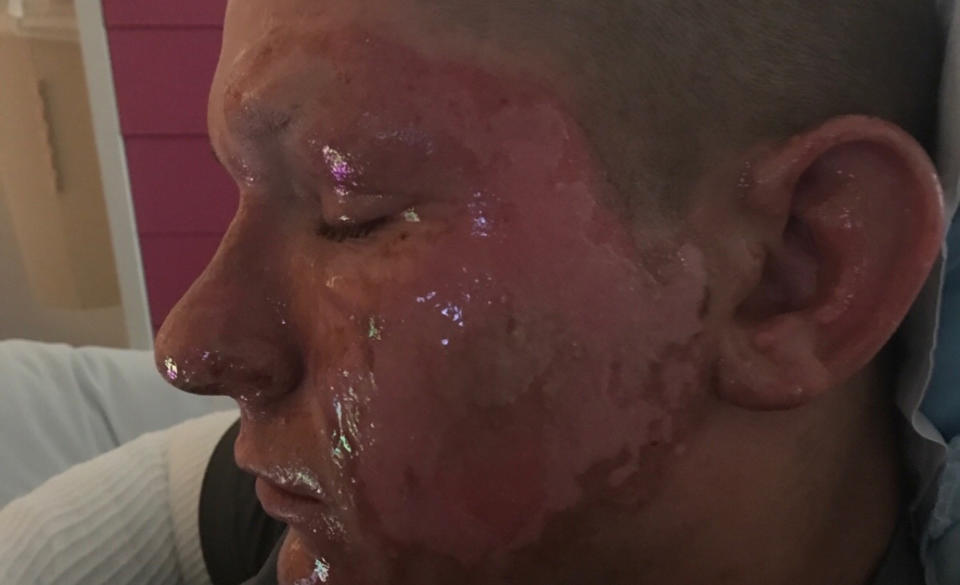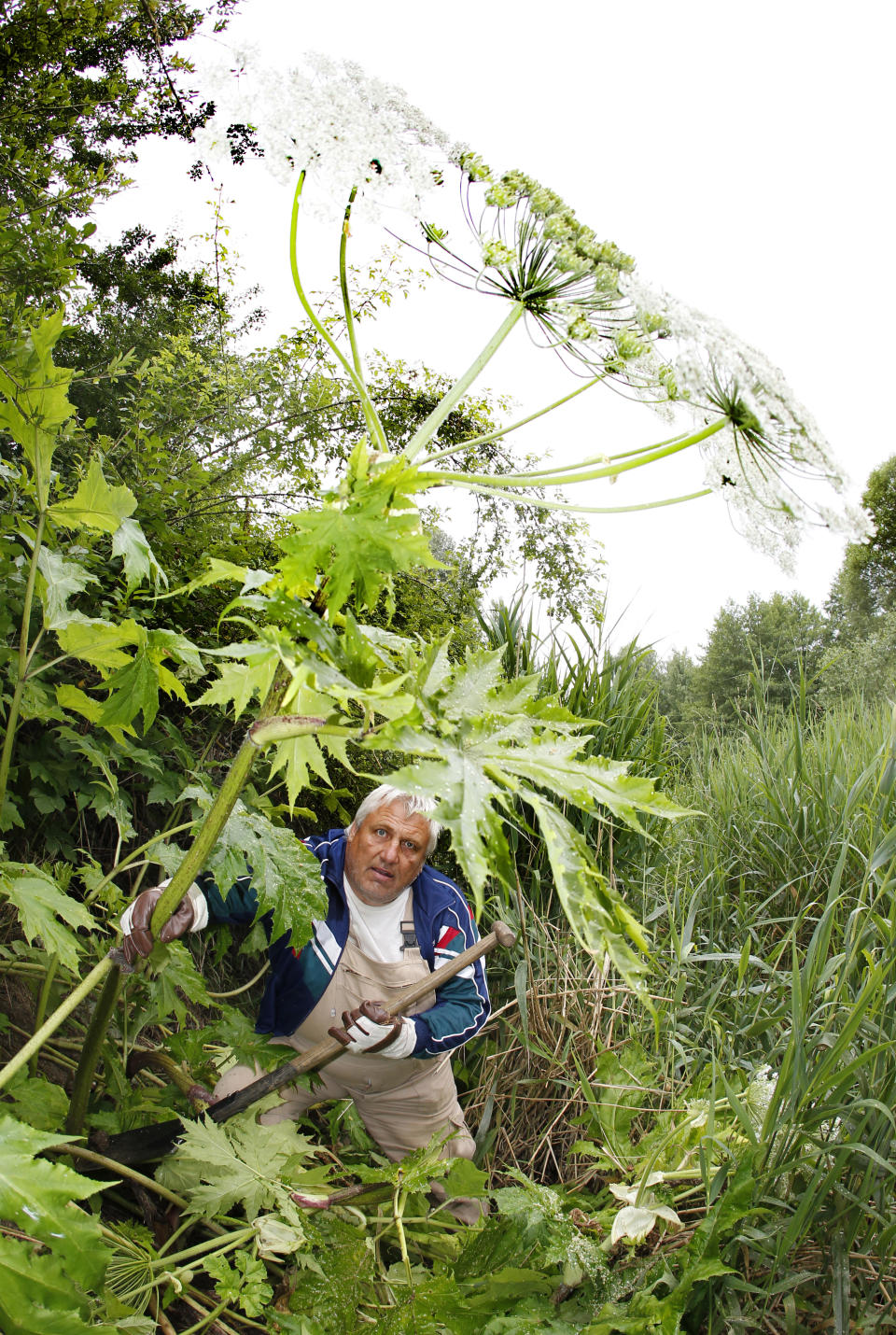Teen suffers third-degree burns from giant hogweed, 'Queen Anne’s Lace on steroids' which can burn, blind

If you see a huge weed while gardening, you’re probably going to try to take it out — that’s just gardening 101. But a teenager in Virginia did just that and ended up with second- and third-degree burns.
Alex Childress was gardening in Fredericksburg, Va., to try to raise money for college when he chopped down a tall plant that was topped with white flowers, according to the Richmond Times-Dispatch. The plant turned out to be a giant hogweed, which briefly brushed across the 17-year-old’s face and arm when he went to throw it out in the woods.

When Childress got home later that day, his father, Justin Childress, noticed that his son had what looked like an intense sunburn. “The top layer of skin on the left side of his face basically was gone and appeared to be like a really bad burn that had already peeled,” he told the Richmond Times-Dispatch.
Alex was taken to the hospital, where doctors determined that he suffered from burns from coming into contact with the giant hogweed. He spent two days in a burn center before being discharged. Alex has a long road to recovery, will have to limit his exposure to sunlight, and will have to wear sunscreen with high levels of SPF, his father said.

Hogweed, which is usually referred to as giant hogweed, is an invasive plant that was introduced to the U.S. from southwest Russia and the surrounding area, Peter Carrington, an edible and toxic plant specialist at Michigan State University, tells Yahoo Lifestyle. The plant, which he says grows to a “huge size,” was introduced during the Victorian era as a garden accent plant. “Once the virulent nature of its toxins was recognized, it was banned in many places, but not before they had escaped into the environment in several places,” Carrington says. Now, it’s classified as a federal noxious weed and is not allowed to be grown, David Ward, Art & Margaret Herrick endowed professor of plant biology at Kent State University, tells Yahoo Lifestyle.
The plant looks a lot like Queen Anne’s Lace except its leaves have large triangular cutouts at the margin and large “umbels’ of white flowers, Carrington says. For the record, “this is like Queen Anne’s Lace on steroids,” Antonio DiTommaso, a professor of ecology at Cornell University, tells Yahoo Lifestyle. “This not something to fool around with.”

Hogweed can show up anywhere people plant it, but it thrives in moist conditions, Carrington says. Oregon and Washington state have “huge problems” with it, but New York and many states around it have hogweed as well, he says.
The main problem with hogweed is the sap — it can cause “serious tissue damage” if it hits your skin, especially if that skin is exposed to sunlight, Carrington says. This isn’t like the hyperallergic reaction that poison ivy can cause; it’s damage caused by the furocoumarin toxins in the plant absorbing UV light and reemitting it at a frequency that causes oxygen molecules to break up. “These are called oxygen radicals, and because they can damage DNA and tissue, it is why we take antioxidant supplements,” he says.

Light is the biggest issue with the sap, Ward says. “Without light, [the toxins in the sap] are inert,” he says. “Thus, when a person enters a brightly lit area, the toxins on their skins will suddenly react.”
The worst-case scenario is getting the sap in one’s eyes, Carrington says. “Depending upon how the case is mishandled, it can result in eye damage, or conceivably blindness,” he says. For the record, Carrington says, you won’t become blind from hogweed just by touching it. However, DiTommaso says that children have gone blind from using the hollow hogweed stems as play telescopes.
Giant hogweed actually wears some of the droplets of its sap on its fuzzy exterior, so you may not even need to break or damage the plant to come into contact with the sap. “Pushing through a thicket of it in shorts and a T-shirt may be sufficient for exposure,” Carrington says. Some children have even gone blind.
If you happen to be unlucky enough to come into contact with giant hogweed, cover the affected area immediately to protect it from sunlight, DiTommaso says. Once you’re inside, wash and rinse the affected area thoroughly with water. Don’t use soap — that can drive the toxin further into your skin, DiTommaso says. If you have a rash or blistering, seek medical care quickly, and cover the affected area to protect it from sunlight, he says. Doctors should be able to take things from there.
If you suspect there is hogweed on your property, it’s important to steer clear and call in a botanist for help, DiTommaso says.
Alex has set up a GoFundMe to help raise money to pay his medical bills and college.
Read more from Yahoo Lifestyle:
Alleged Trump mistress Stormy Daniels has been arrested — but why?
Melania Trump wears classic $1,995 Burberry trench for European arrival
Follow us on Instagram, Facebook, and Twitter for nonstop inspiration delivered fresh to your feed, every day.


